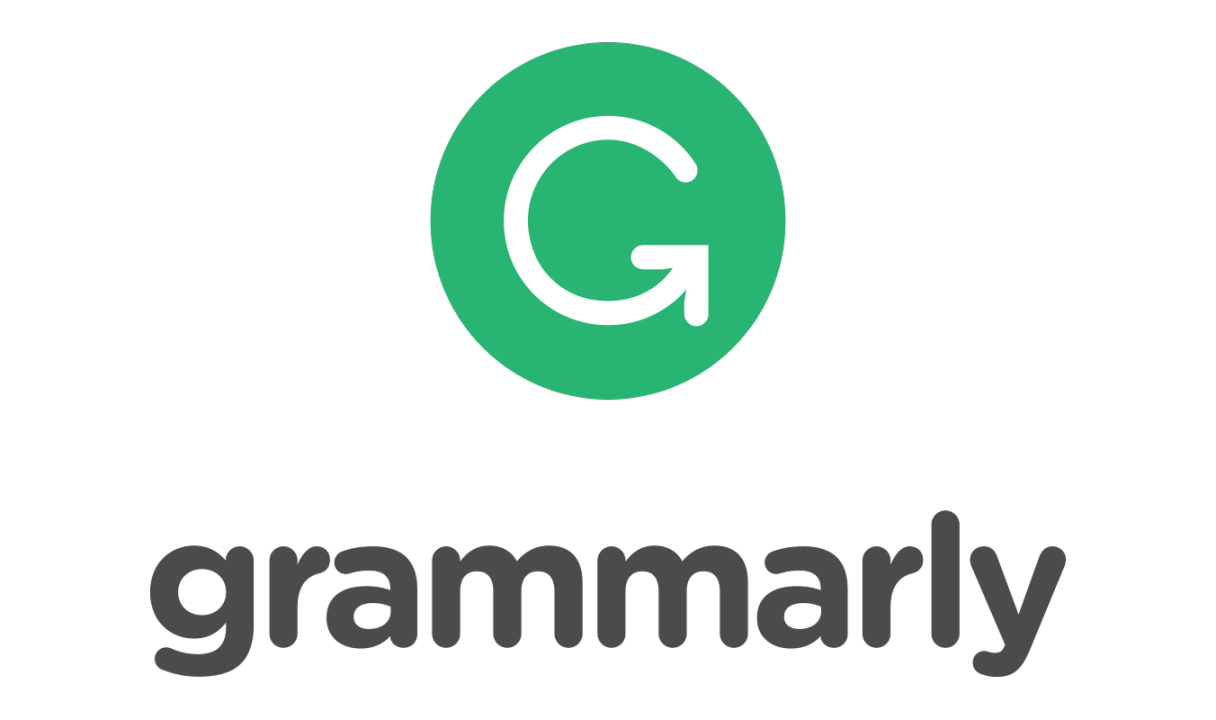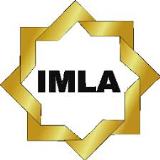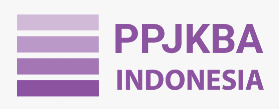The Effect of Using Ristek Muslim's “Arabic-Indonesian” E-Dictionary Application to Improve Students' Arabic Vocabulary Mastery in Riau / Pengaruh Penggunaan Aplikasi E-Dictionary “Arab-Indonesia” karya Ristek Muslim Untuk Meningkatkan Penguasaan Kosakata Bahasa Arab Mahasiswa di Riau
DOI:
https://doi.org/10.22515/athla.v5i2.9888Keywords:
Arab-Indonesia Dictionary, Ristek Muslim, Vocabolary, Arabic EducationAbstract
This study aims to analyze the effect of using the “Arabic-Indonesian” E-Dictionary application by Ristek Muslim to improve the mastery of Arabic vocabulary of students in Riau. The method used is a descriptive quantitative approach with a survey and interview method design to obtain comprehensive information about the students' experiences. The population were Arabic Language Education students in Riau who used the "Arabic-Indonesian" dictionary application. A sample size of 33 students was selected using the saturated sampling method. Data collection was done in the form of a questionnaire, which was then analyzed using SPSS. The results of the data obtained showed that there was a significant effect of using digital dictionaries in increasing the vocabulary of Arabic Language Education students in Riau. This can be seen from the percentage of the results of the distribution of questionnaires in the form of a satisfaction survey questionnaire on the dictionary application of Ristek Muslim. In addition, the presence of this application is a solution to the use of digitization so that it can be used anytime and anywhere. The study's recommendation is that educational institutions facilitate the utilisation of digital dictionary applications in the language learning process, and that students be provided with training to optimise the use of these applications. Furthermore, it is anticipated that application developers will continue to update and enhance features in order to better align them with user needs.
Downloads
References
Albir, A. H., & Molina, L. (2002). Translation Techniques Revisited: A Dynamic and Functionalist Approach. Meta: Journal Des Traducteurs, 47(4), 498–512. https://doi.org/10.7202/008033ar
Austin, J. L. (1962). How to Do Things with Words. Oxford University Press.
Baker, M. (1992). In Other Words: A Coursebook on Translation. Routledge.
Baker, M. (2018). In Other Words: A Coursebook on Translation. Routledge. https://doi.org/10.4324/9781315619187
Chesterman, A. (1997). Memes of Translation: The Spread of Ideas in Translation Theory. John Benjamins. https://doi.org/10.1075/btl.22
Creswell, J. W. (2014). Research Design: Qualitative, Quantitative, and Mixed Methods Approaches. Sage Publications. https://doi.org/10.3102/003465430298487
Denzin, N. K., & Lincoln, Y. S. (2018). The SAGE Handbook of Qualitative Research. Sage Publications.
Díaz Cintas, J., & Remael, A. (2007). Audiovisual Translation: Subtitling. St. Jerome Publishing. https://doi.org/10.7202/017916ar
Georgakopoulou, P. (2009). Subtitling for the DVD Industry. In J. D. Cintas & G. Anderman (Eds.), Audiovisual Translation: Language Transfer on Screen (pp. 21–35). Palgrave Macmillan. https://doi.org/10.1057/9780230234581
Ghufron, M. A., Yolanda, N., & Mardiyah, M. (2022). Analisis Teknik Penerjemahan Subtitle Dalam Film “Inside Out” Karya Pete Docter Dan Ronnie Del Carmen. Prosiding Seminar Nasional Bahasa Seni Dan Sastra, 1, 209–216. https://doi.org/10.31227/osf.io/mr49b
Gottlieb, H. (1992). Subtitling: A New University Discipline. In C. Dollerup & A. Loddegaard (Eds.), Teaching Translation and Interpreting (pp. 161–170). John Benjamins. https://doi.org/10.1075/ata.iv.15got
Gutt, E.-A. (2000). Translation and Relevance: Cognition and Context. St. Jerome Publishing.
Hadi, M. Z. P., & Suhendra, E. (2019). Analisis Ideologi dan Teknik Penerjemahan Pada Teks Terjemahan Mahasiswa STIBA Bumigora Tahun Akademik 2017/2018. Humanitatis: Journal of Language and Literature, 6(1), 25–46. https://doi.org/10.31227/osf.io/vp8xe
Haq, Z. (2017). Penerjemahan Subtitle dari Bahasa Inggris ke Dalam Bahasa Indonesia (Penelitian Analisis Isi Pada Subtitle Film Contraband). Deiksis, 9(1), 37–52. https://doi.org/10.26499/deiksis.v9i1.89
Hatim, B., & Mason, I. (1990). Discourse and the Translator. Longman.
Hatim, B., & Mason, I. (1997). The Translator as Communicator. Routledge.
House, J. (2015). Translation Quality Assessment: Past and Present. Routledge. https://doi.org/10.4324/9781315752839
Ivarsson, J., & Carroll, M. (1998). Subtitling. TransEdit.
Lefevere, A. (1992). Translation, Rewriting, and the Manipulation of Literary Fame. Routledge.
Levinson, S. C. (1983). Pragmatics. Cambridge University Press.
Manesah, M. A. (2020). Pengantar Teori Film. Penerbit Deepublish.
Mehawesh, M. I., & Neimneh, S. S. (2019). Translating Culture: A Case Study of the Translation of “Theeb.” Zarqa University Journal, 19(2), 45–61. https://doi.org/10.31227/osf.io/rm4sj
Miles, M. B., & Huberman, A. M. (1994). Qualitative Data Analysis: An Expanded Sourcebook. Sage Publications.
Munday, J. (2016). Introducing Translation Studies: Theories and Applications. Routledge. https://doi.org/10.4324/9781315691862
Nababan, M. R. (2012). Penerjemahan: Teori dan Praktek. Pustaka Pelajar. https://doi.org/10.31227/osf.io/v7f9w
Newmark, P. (1988). A Textbook of Translation. Prentice Hall.
Nugraha, A. F. (2022). Analisis Teknik Terjemahan Subtitle Film The Climbers Karya Daniel Lee. Dialektika. https://doi.org/10.31227/osf.io/k5y2j
Pym, A. (2010). Exploring Translation Theories. Routledge.
Rahma, I. (2019). Penerjemahan Teks Audio Visual (Subtitling). Jurnal Educatio: Jurnal Pendidikan FKIP UNMA, 5(3), 154–160. https://doi.org/10.31227/osf.io/39tr8
Reiss, K., & Vermeer, H. J. (1984). Grundlegung einer allgemeinen Translationstheorie. Niemeyer. https://doi.org/10.1515/9783111351915
Searle, J. R. (1969). Speech Acts: An Essay in the Philosophy of Language. Cambridge University Press.
Sperber, D., & Wilson, D. (1995). Relevance: Communication and Cognition. Blackwell.
Sugiyono. (2017). Metode Penelitian Kuantitatif Kualitatif dan R&D. Alfabeta.
Suparyanto, & Rosad. (2015). Pengantar Film. Jurnal Seni Film, 5(3), 248–253.
Tymoczko, M. (2007). Enlarging Translation, Empowering Translators. St. Jerome Publishing.
Venuti, L. (2017). The Translator’s Invisibility: A History of Translation. Routledge. https://doi.org/10.4324/9780203360064
Yule, G. (1996). Pragmatics. Oxford University PressAlamri, H. R., & Hakami, H. M. (2022). Exploring Perspectives of EFL Students on Using Electronic Dictionaries to Improve Vocabulary Learning: A Comparative Study. International Journal of Curriculum and Instruction, 14(2), 1578–1599.
Arifin, A., & Mulyani, S. (2021). Persepsi Mahasiswa Terhadap Penggunaan Kamus Digital Bahasa Arab Di Era Society 5.0. An Nabighoh, 23(2), 235. https://doi.org/10.32332/an-nabighoh.v23i2.4478
Arsi, A., & Herianto, H. (2021). Langkah-langkah Uji Validitas Dan Realibilitas Instrumen Dengan Menggunakan SPSS.
Azmi, H., Maulidiyah, I. W., Miftah, D., & Sutisna, F. (2018). Peran Kamus Digital
Arab Bagi Mahasiswa Studi Arab Di Era 4.0. Multaqa Nasional Bahasa
Arab, 1(1), 1–10. Retrieved from
https://munasbauai.com/index.php/mnba/article/view/30Busro, M. (2016). Sejarah Perkamusan Bahasa Arab Di Indonesia. El-Wasathiya:
Jurnal Studi Agama, 4(2), 129–158. Retrieved from
http://ejournal.kopertais4.or.id/mataraman/index.php/washatiya/article/view/
Dewandono, W. A. (2020). Leksikologi dan Leksikografi Dalam Pembuatan dan
Pemaknaan Kamus. Paramasastra : Jurnal Ilmiah Bahasa Sastra Dan
Pembelajarannya, 7(1), 16–16.
https://doi.org/10.26740/PARAMASASTRA.V7N1.P16
Fadhilah, M. A. (2021). Analisis Karakteristik Aplikasi Kamus Arab-Indonesia Karya Tim Ristek Muslim. Alsina : Journal of Arabic Studies, 3(2), 201–218. https://doi.org/10.21580/alsina.3.2.5938
F. Lafamane, “Fenomena Penggunaan Bahasa Daerah di Kalangan Remaja,” Fenom. Pengguna. Bhs. Drh. di Kalangan Remaja, 2020.
F. Agnesia, R. Dewanti, and D. Darmahusni, “Praksis Literasi Digital dalam Pembelajaran Bahasa Inggris Abad 21,” J. Kaji. Bahasa, Sastra dan Pengajaran, vol. 5, no. 1, pp. 16–29, 2021.
G. P. Yustika and S. Iswati, “Digital Literacy in Formal Online Education: A Short Review,” Din. Pendidik., vol. 15, no. 1, pp. 66–76, 2020
Hastang, H. (2019). EFEKTIFITAS KAMUS BAHASA ARAB BERBASIS APLIKASI ANDROID DALAM MENERJEMAHKAN QIRAAH. DIDAKTIKA, 11(1), 112. https://doi.org/10.30863/didaktika.v11i1.158
Hidayah, N., & Maulidah, A. W. (2024). Media Pembelajaran Kamus Biologi Untuk Meningkatkan Kosakata Bahasa Arab Mahasiswa Pendidikan Biologi. Ihtimam: Jurnal Pendidikan Bahasa Arab, 7(1), 177–190.
Ilham, R. N. (2023). Pemanfaatan Kamus Digital Bahasa Arab-Indonesia sebagai Sumber Belajar di SMP IT Ibnu Khaldun. Journal of Education Research, 4(4), 1927–1937.
Izzah, N., Mushodiq, M. A., & Syaifullah, M. (2021). Semantics of Lexicology in the
Study of Arabic Phonemes and Lexemes. Journal of Arabic Language, 1(1).
https://doi.org/10.25217/mantiqutayr.v1i1.1327
Mahridawati, M. (2015). Kamus Idiom Arab-Indonesia Pola Aktif Karya Basuni Imamuddin Dan Nashiroh Ishaq (Analisis Terhadap Metode Penyajian Kamus). ITTIHAD, 13(24), 58–66.
Saputra, A. (2020). CAMI: Aplikasi Uji Validitas dan Reliabilitas Instrumen Penelitian Berbasis Web. Yayasan ahmar cendekia indonesia.
Shalihah, S. (2017). Menerjemahkan Bahasa Arab: Antara Ilmu dan Seni. At-Ta’dib,
(1), 157. https://doi.org/10.21111/AT-TADIB.V12I1.867
Setiyawan, A. (2017). Problematika Penggunaan Kamus Arab-Indonesia dalam
Pembelajaran Tarjamah di Pusat Pengembangan Bahasa UIN Sunan
Kalijaga Yogyakarta. Arabia: Jurnal Pendidikan Bahasa Arab, 8(1).
https://doi.org/10.21043/ARABIA.V8I1.1934
Sitokdana, M. N. N., Tanone, R., & Tanaem, P. F. (2019). Digitalization of the local
language dictionary of Pegunungan Bintang. Procedia Computer Science,
, 49–56. https://doi.org/10.1016/j.procs.2019.11.098
Sugiyono. (2022). Metode Penelitian Kuantitatif Kualitatif dan R&D (Cetakan Ke-4). ALFABETA.
Sujarno. (2016). Leksikografi Indonesia: Konsep Dasar, Fungsi, Isi, dan Jenis Kamus. Inovasi, XVIII(1), 50–58.
Syagif Hannany Mustaufiy, A., & Sadat, A. (2020). Analisis Preferensi Mahasiswa
Terhadap Penggunaan Kamus Dalam Mempelajari Bahasa Arab. AL-
AF’IDAH: Jurnal Pendidikan Bahasa Arab Dan Pengajarannya, 4(1), 1–17.
https://doi.org/10.52266/AL-AFIDAH.V4I1.462
Taufiqurrochman, R. (2018). Masterpiece kamus bahasa Arab karya literasi ulama
nusantara dari masa ke masa.
Taufiqurrahman. (2009). Aplikasi Kamus-Kamus Digital Dalam Penerjemahan Bahasa
Arab. Research Collections, 0(0). Retrieved from http://ejournal.uin-
malang.ac.id/index.php/research/article/view/2086
Tim Ristek Muslim. (t.t.). Sejarah Pendirian Ristek Muslim. Ristek Muslim. https://ristekmuslim.com/sejarah-pendirian-ristek-muslim
Uqba, M. S. S., Hasaniyah, N., Al Anshory, A. M., & Mudinillah, A. (2024). Students’ Perception of Translation Software: A Case Study in the Bachelor and Master Programs of Arabic Education. Alibbaa’: Jurnal Pendidikan Bahasa Arab, 5(1), 82–97. https://doi.org/10.19105/ajpba.v5i1.11555
Wahida, B. (2017). Kamus Bahasa Arab sebagai Sumber Belajar (Kajian terhadap Penggunaan Kamus Cetak dan Kamus Digital). At Turots : Jurnal Pendidikan Islam, 11. Retrieved from http://jurnaliainpontianak.or.id/index.php/atturats
Zahrah, H., Wargadinata, W., & Barry, N. A. (2021). Analisis E-Dictionarry “Arab-Indonesia” yang Tersedia di Playstore dengan Pendekatan Leksikologi. Shaut al Arabiyyah, 9(1), 1. https://doi.org/10.24252/saa.v9i1.21494
Zein, M. F. (2019). Panduan Menggunakan Media Sosial untuk Generasi Emas Milenial. Mohamad Fadhilah Zein.
Zhang, S., Xu, H., & Zhang, X. (2021). The effects of dictionary use on second language vocabulary acquisition: A meta-analysis. International Journal of Lexicography, 34(1), 1–38.
Downloads
Published
How to Cite
Issue
Section
Citation Check
License
Copyright (c) 2024 Nurlatipah, M Sholih Salimul Uqba, Evy Nur Rohmawaty

This work is licensed under a Creative Commons Attribution-ShareAlike 4.0 International License.










